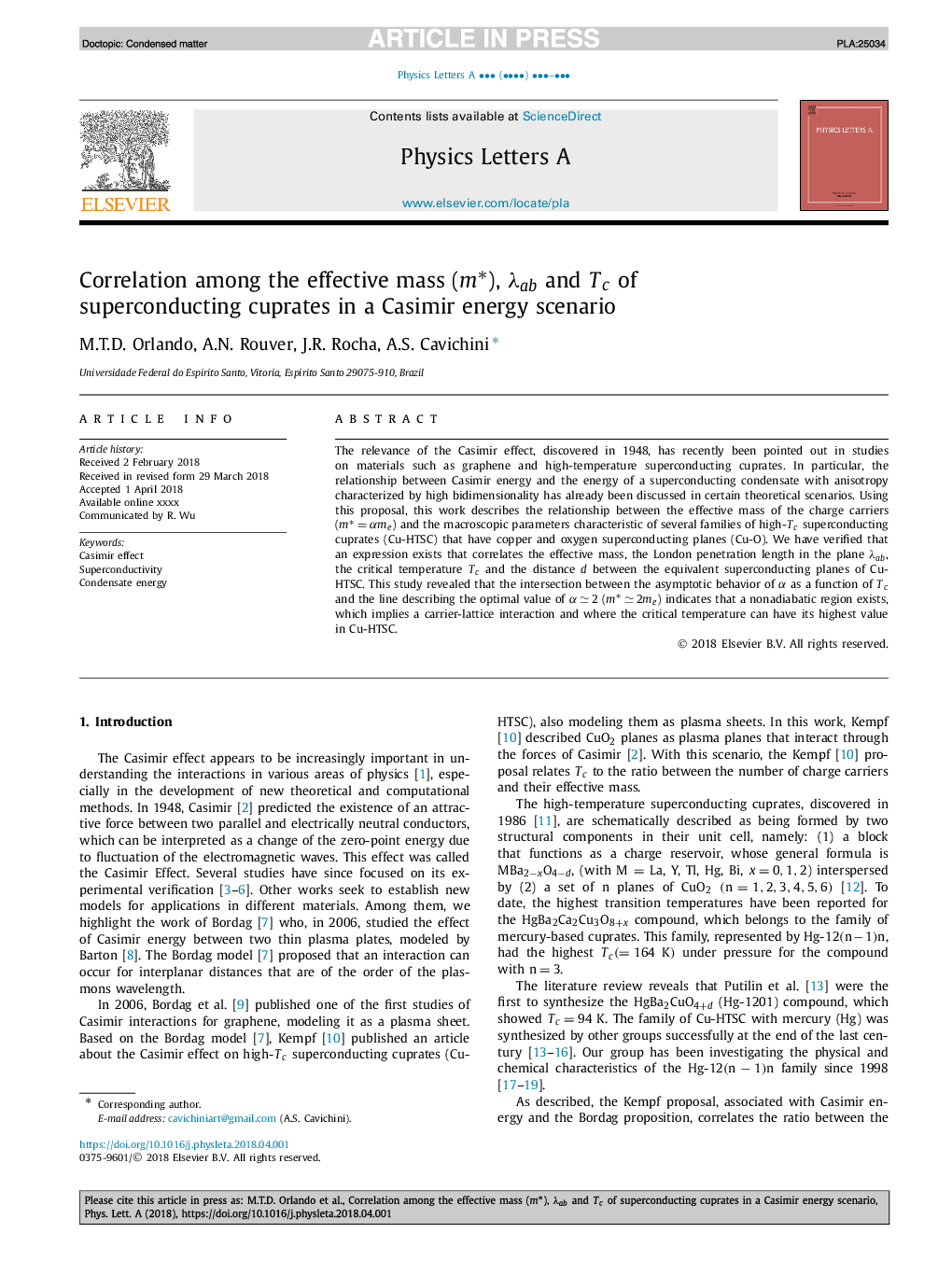| Article ID | Journal | Published Year | Pages | File Type |
|---|---|---|---|---|
| 8203409 | Physics Letters A | 2018 | 6 Pages |
Abstract
The relevance of the Casimir effect, discovered in 1948, has recently been pointed out in studies on materials such as graphene and high-temperature superconducting cuprates. In particular, the relationship between Casimir energy and the energy of a superconducting condensate with anisotropy characterized by high bidimensionality has already been discussed in certain theoretical scenarios. Using this proposal, this work describes the relationship between the effective mass of the charge carriers (mâ=αme) and the macroscopic parameters characteristic of several families of high-Tc superconducting cuprates (Cu-HTSC) that have copper and oxygen superconducting planes (Cu-O). We have verified that an expression exists that correlates the effective mass, the London penetration length in the plane λab, the critical temperature Tc and the distance d between the equivalent superconducting planes of Cu-HTSC. This study revealed that the intersection between the asymptotic behavior of α as a function of Tc and the line describing the optimal value of αâ2 (mââ2me) indicates that a nonadiabatic region exists, which implies a carrier-lattice interaction and where the critical temperature can have its highest value in Cu-HTSC.
Keywords
Related Topics
Physical Sciences and Engineering
Physics and Astronomy
Physics and Astronomy (General)
Authors
M.T.D. Orlando, A.N. Rouver, J.R. Rocha, A.S. Cavichini,
